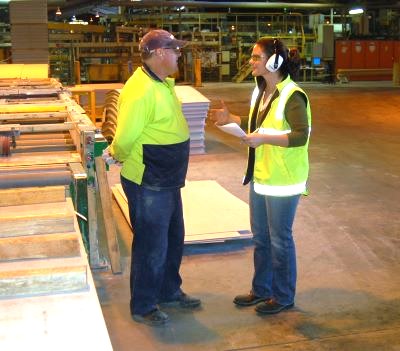Responsibilities and rights
In general, the responsibilities and rights of all people in the workplace are defined in the WHS Act and Regulations.
Responsibilities

Different people in an organisation have different levels of responsibility for health and safety, depending on their level of authority.
Employers and PCBUs (see WHS laws and regulations for a definition) have a primary duty of care to protect the health and safety of employees, contractors, visitors and others who come into the workplace.
They are required to do this through:
maintaining a safe work environment, including ensuring that the company’s buildings, facilities, and other structures are safe and adequate
maintaining safe plant and machinery and keeping equipment in good working order
ensuring that workers are properly trained to do their job, and provided with up-to-date information on safety matters
monitoring site conditions and workers’ health
investigating accidents or incidents whenever they occur and improving work conditions when needed.
Workers under the direction of a PCBU also have specific responsibilities, including:
taking reasonable care to stay safe while at work, and not doing anything that might adversely affect the health and safety of others
following safety instructions, and complying with the procedures set out in company documents
using personal protective equipment (PPE) and other safety equipment when required, and keeping them in good condition
reporting injuries, unsafe practices or unhealthy conditions to their supervisor
cooperating in health and safety programs, such as attending toolbox meetings and other safety meetings.
Delegation of responsibilities

In larger organisations, employers often delegate some of their WHS responsibilities to other members of the management team in order to share the workload.
However, as the PCBU of the business, the employer is always ultimately responsible for ensuring that the workplace stays safe – so they can never delegate away their legal liability if something goes wrong.
Below is a typical breakdown of responsibilities for different members of the management team in larger companies.
Directors are responsible for:
ensuring that the company’s WHS policies are effective in keeping the workplace safe
ensuring that the company’s activities are in compliance with WHS legislation.
Managers are responsible for:
developing and implementing safe work policies and procedures
consulting with the workforce on WHS issues
distributing all relevant information to employees.
Supervisors are responsible for:
supervising employees’ work performance
ensuring that appropriate training is given to employees
carrying out regular safety inspections
correcting unsafe work practices and disciplining employees who disregard WHS policies.
Workers' rights

Workers also have rights under the WHS Act. These include the right to:
raise genuine safety issues with their supervisor and have their concerns taken seriously
be consulted whenever changes are made that could affect their health or safety
refuse to do work that is unsafe, or that they haven’t been properly trained to do
be covered under a workers compensation scheme for injuries that might occur at work.